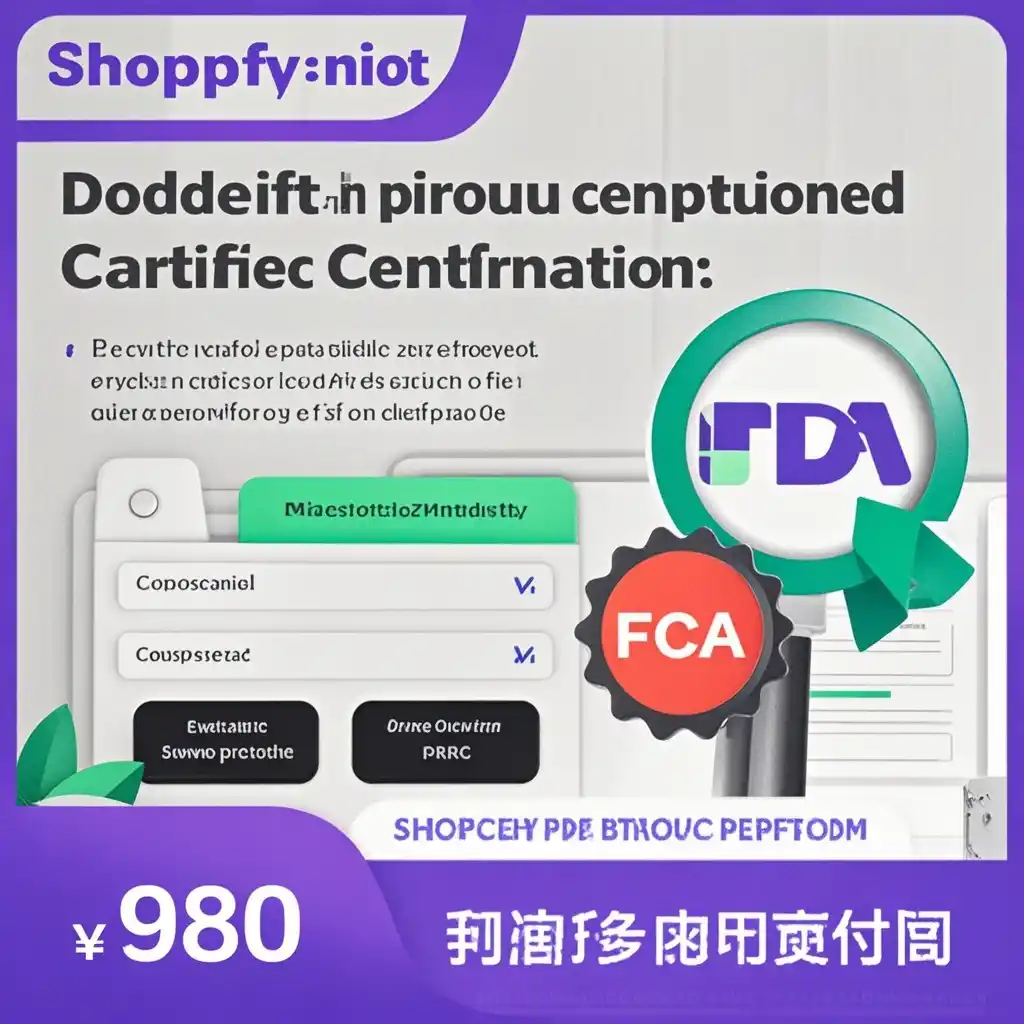

In today's global e-commerce landscape, Shopify has emerged as a popular platform for sellers to showcase and sell their products. However, with the presence of tariffs and various regulatory requirements, obtaining product certifications has become crucial for a smooth market entry. In this blog post, we'll guide Shopify sellers through the process of getting product certifications, especially when dealing with tariffs.
Background
Tariffs are trade barriers imposed by governments, often with the aim of protecting domestic industries or for other economic and political reasons. When selling products on Shopify in a market where tariffs apply, having the necessary product certifications can make a significant difference. These certifications not only ensure compliance with local regulations but also build trust with customers.
For example, let's consider a Shopify seller, Sarah, who wants to sell electronics in a particular country where there are high tariffs on imported electronics. To enter this market successfully, she needs to obtain certifications like FCC (Federal Communications Commission) in the US, which ensures that her electronic products meet certain standards related to electromagnetic compatibility and radio frequency emissions. Without these certifications, her products may be subject to additional scrutiny, delays at customs, or even rejection, making it difficult to penetrate the market.
Certification Process
1. Identify the Required Certifications: The first step is to research and determine which certifications are necessary for your product in the target market. This depends on the type of product you're selling and the regulations of the country or region. For instance, if you're selling food products, you might need FDA (Food and Drug Administration) approval in the US. You can start by checking the official government websites of the target market or consulting with industry experts.
2. Prepare Your Product Documentation: Once you've identified the required certifications, gather all the relevant documentation about your product. This may include product specifications, manufacturing processes, ingredient lists (for food products), and test reports if available. For example, if you're seeking FCC certification for your electronics, you'll need detailed technical specifications about the device's radio frequency operations.
3. Choose a Certification Body: There are many accredited certification bodies that can conduct the testing and certification process. Look for ones that are recognized and have a good reputation in the industry. Some well-known certification bodies for different types of products include UL (Underwriters Laboratories) for safety certifications. Research and compare the costs, turnaround times, and services offered by different bodies before making a choice.
4. Submit Your Product for Testing: After selecting a certification body, send your product samples along with the prepared documentation to them. The certification body will then conduct a series of tests based on the relevant standards. For example, if it's an FCC test for electronics, they'll check for proper radio frequency emissions and compliance with other technical requirements. This testing phase can take some time, depending on the complexity of the product and the workload of the certification body.
5. Receive and Display the Certification: If your product passes the tests, the certification body will issue the relevant certification. You can then display this certification on your Shopify store, either on the product page or in a dedicated section about product compliance. This helps build credibility with your customers and shows that your products meet the required standards.
Strategies for a Smooth Certification Process
1. Start Early: Don't wait until the last minute to begin the certification process. It can often take longer than expected, especially if there are any issues during testing. Starting early gives you enough time to address any potential problems and still meet your market entry timeline.
2. Ensure Product Quality: Make sure your product is of high quality and designed to meet the relevant standards from the start. This reduces the chances of failing the tests and having to make costly modifications later. For example, if you're manufacturing toys, ensure they meet all the safety requirements in terms of materials used and construction.
3. Stay Informed: Keep up with any changes in the regulations and certification requirements of your target market. Subscribe to industry newsletters, follow relevant government agencies on social media, and participate in industry forums to stay updated. This way, you can quickly adapt to any new requirements and avoid any compliance issues.
4. Build a Relationship with the Certification Body: Establishing a good relationship with the certification body can be beneficial. They can provide guidance and advice during the process, and may even offer faster turnaround times in some cases. For example, if you've worked with a particular certification body before and had a positive experience, they may be more willing to assist you promptly with future certifications.
Summary
Obtaining product certifications on Shopify when dealing with tariffs is essential for a successful market entry. By understanding the background of why these certifications are needed, following the proper certification process, and implementing effective strategies, Shopify sellers can ensure that their products meet the necessary standards and gain the trust of customers in the target market. Remember, it's all about compliance, quality, and building a reputation for reliability. Whether you're selling electronics like Sarah or any other type of product, taking the time to get the right certifications will pay off in the long run and help you navigate the challenges of international e-commerce in the face of tariffs.
So, don't let the complexity of product certifications deter you. With careful planning and execution, you can smoothly enter the market with your Shopify store and offer high-quality products that meet all the regulatory requirements.